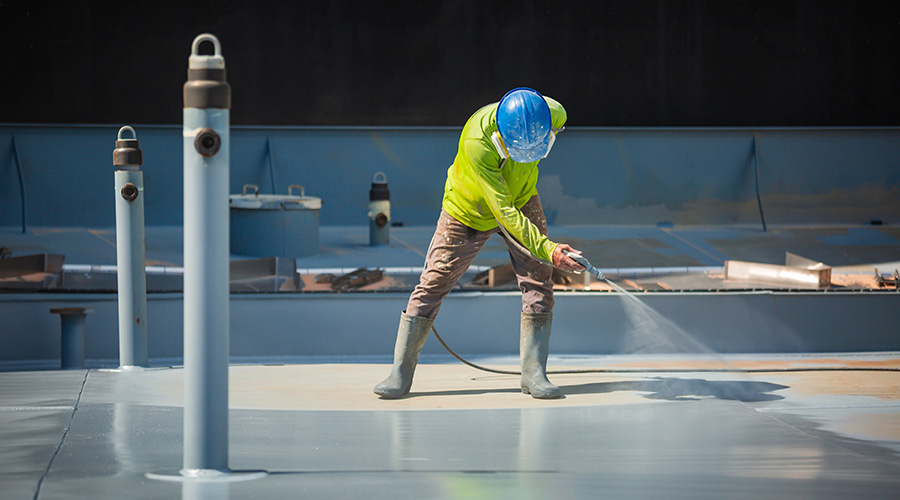 Protecting tough surfaces means conducting inspections, understanding condtitions and applying the right coatings.
Protecting tough surfaces means conducting inspections, understanding condtitions and applying the right coatings.Concrete Maintenance: Parking Garages
By the time the damage to a parking garage shows up, it could already be too late. Parking garages' floors deteriorate from the inside and applying the correct coating could help fight off the deterioration.
Part two of a four part series.
Concrete parking garages
Unlike the damage to sidewalks and drive aprons, damage to concrete parking garages might not be visible until it is extensive. The typical damage in concrete parking garages is the result of corrosion to the embedded reinforcing steel.
When vehicles entered the garage, they carry in water and road salts and deposit them on the drive surfaces of the garage. The concrete absorbs the water and salts, which come into contact with the reinforcing steel.
As the chlorides from the road salts increase in concentration, the steel begins to corrode. As it corrodes, it expands, causing cracking, delamination and spalling of the concrete. By the time the first signs of this damage are noticeable on the surface, the hidden damage to the steel and concrete is fairly extensive.
This problem can be extensive in older structures in which installers did not coat the reinforcing steel to protect it from corrosion. Newer construction uses reinforcing steel that includes an epoxy coating to protect the steel. But even in new construction, with time and exposure, steel corrodes.
Managers should be sure to schedule inspections of all parking garages at least once each year for damage. The inspector should walk the entire garage looking for cracks in the concrete into areas where the surface is spalling.
Testing for delamination involves dragging a steel chain over the concrete floor and listening for changes in the resulting sound. A hollow sound most likely indicates delamination within the concrete. When examining the underside of drive surfaces, the inspector should look for cracks in the concrete, exposed sections of reinforcing steel and rust stains. If there are multiple areas of damage or if the damage is widespread, it might be necessary to take core samples to obtain more detailed information.
The key to limiting damage is quick action. Repairing delaminated areas typically requires saw cutting around the damaged area and removing the concrete down to the reinforcing steel. The steel must then be cleaned of all corrosion and coated with epoxy. The existing concrete surface must then be cleaned and coated with a bonding agent before patching with new concrete.
Spalling areas on the underside of the concrete require removal of the damaged concrete, cleaning and coating of the reinforcing steel with epoxy, and application of a bonding agent to the existing concrete. If the area is relatively small, workers can install the new concrete in the form of a trowelled-on patch. Larger areas require temporary supports and concrete forms.
The best way to protect a parking garage from this type of damage is to apply an epoxy coating to the drive surfaces of the garage during construction. Only those surfaces not installed on grade need to be coated.
Workers will have to inspect the coating update it regularly. Depending on the level of traffic exposure and exposure to sunlight, most high-quality coatings offer a service life of 10-15 years. While a high-quality coating will cost $3-5 per square foot, that is a fraction of the cost of having to repair even a small portion of the garage concrete.
Related Topics:















